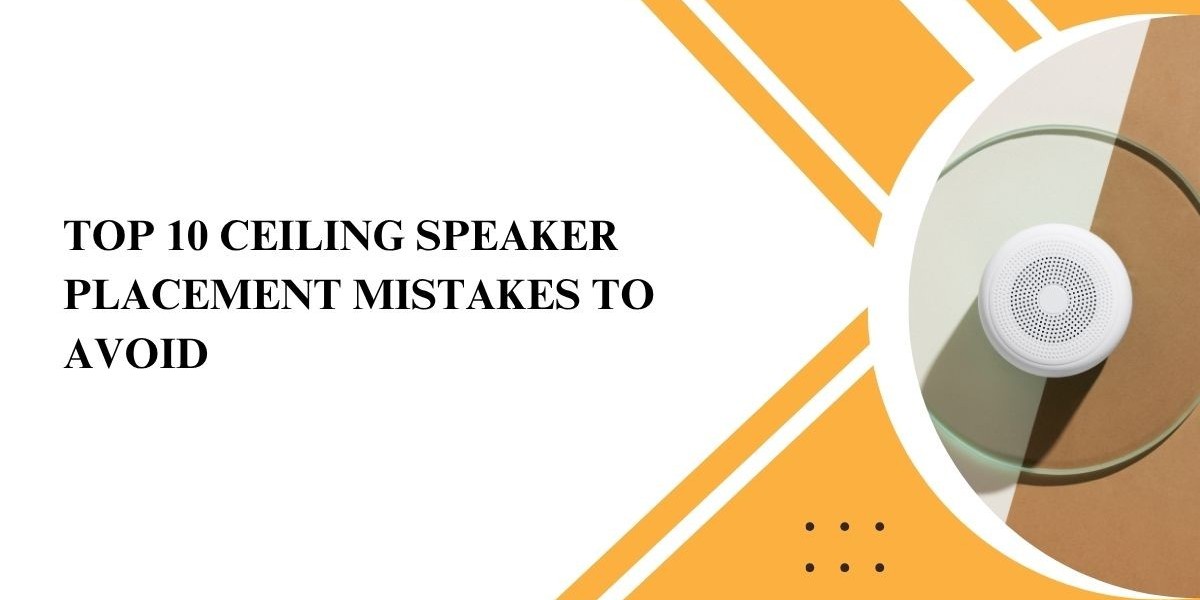Great audio starts with smart design. Whether you are outfitting a corporate office, a high-end home theater, or a fitness studio, the way you position your speakers plays a critical role in the final listening experience. While choosing high-quality speakers is important, even the best hardware can underperform if the placement is not done correctly. That is why it is essential to avoid common pitfalls in Ceiling Speaker Placement.
XTEN-AV provides AV professionals with intelligent design tools to plan and execute audio layouts with confidence. With simulation capabilities, real-time collaboration, and precise documentation, XTEN-AV helps eliminate errors that often lead to uneven coverage, sound distortion, or client dissatisfaction.
In this blog, we cover the top 10 Ceiling Speaker Placement mistakes to avoid so you can create consistent and immersive audio environments from the start.
1. Placing Speakers Too Far Apart
One of the most common mistakes is spacing ceiling speakers too far from each other. This creates audio dead zones where sound fades or disappears entirely. The result is an inconsistent listening experience across the room.
Solution:
Use the general rule of placing ceiling speakers at a distance equal to the ceiling height. For example, in a 10-foot ceiling, speakers should be about 10 feet apart. XTEN-AV helps you calculate this easily and simulate audio coverage.
2. Placing Speakers Too Close Together
On the flip side, crowding speakers too closely can cause overlap in sound dispersion. This leads to volume hotspots, comb filtering, and phasing issues, which distort clarity and reduce audio quality.
Solution:
Slightly overlap the sound cones but avoid placing speakers directly next to each other. Use XTEN-AV’s layout tools to find the sweet spot.
3. Ignoring Room Shape and Obstacles
Walls, beams, lighting fixtures, and HVAC vents can interfere with speaker sound patterns. Failing to account for these can block sound or reflect it in unwanted ways.
Solution:
Always evaluate the room’s architecture before placing speakers. XTEN-AV lets you mark obstacles and structural features directly on the floor plan.
4. Mounting Directly Over Seating or Work Areas
Placing speakers directly above where people sit or work often leads to an unbalanced experience. The sound may feel too loud overhead and underwhelming elsewhere.
Solution:
Position speakers slightly between seating zones for more even distribution. Plan layouts based on how the room is used, not just symmetrical aesthetics.
5. Failing to Create Separate Audio Zones
Different areas in a space often require different volume levels. A single audio zone across a large or multi-use space can create conflict and inconsistency.
Solution:
Divide the layout into functional audio zones. XTEN-AV allows you to define zones and control audio distribution more efficiently.
6. Using the Wrong Type of Speaker
Not all ceiling speakers are made the same. Using a speaker with the wrong dispersion angle or output level can cause poor sound coverage or excess noise.
Solution:
Choose speakers suited for the ceiling height and application. XTEN-AV features a comprehensive product library so you can match your design with the right hardware.
7. Ignoring Ceiling Height in Placement Strategy
Ceiling height greatly affects how sound travels and how many speakers you will need. Placing speakers without adjusting for height can result in uneven sound.
Solution:
For higher ceilings, reduce speaker spacing or use directional models. XTEN-AV helps calculate accurate spacing based on ceiling height and speaker specs.
8. Overlooking Room Acoustics
Rooms with hard surfaces like tile, concrete, or glass reflect sound, causing echoes. Rooms with heavy carpeting or curtains may absorb too much sound. Both situations require different planning approaches.
Solution:
Analyze acoustic conditions and plan accordingly. Use XTEN-AV’s simulation tools to preview how the room will sound before installation.
9. Not Testing with Simulation Tools
Relying on rough measurements or assumptions can lead to design errors and rework. Without testing, you are essentially guessing.
Solution:
Always simulate Ceiling Speaker Placement before installation. XTEN-AV offers real-time audio heatmaps, SPL analysis, and placement optimization to test your design virtually.
10. Poor Documentation and Lack of Coordination
Skipping the documentation step leads to confusion during installation. Without clear diagrams and equipment lists, installers may make placement decisions on-site that do not match your design.
Solution:
Use XTEN-AV to generate detailed documentation, including speaker layouts, cabling diagrams, zone maps, and bill of materials. This ensures consistency and communication across all stakeholders.
Final Thoughts
Perfect sound begins with perfect placement. Ceiling speakers can enhance or ruin a space depending on how thoughtfully they are positioned. Avoiding the top 10 mistakes we listed above can help you deliver clear, even, and immersive audio for any project.
With XTEN-AV by your side, you gain a powerful set of tools to design smarter, simulate confidently, and install flawlessly. The platform empowers AV integrators to take control of every phase of the Ceiling Speaker Placement process—from initial concept to final install.
Read more: https://www.aaccoaching.uk/read-blog/15801






